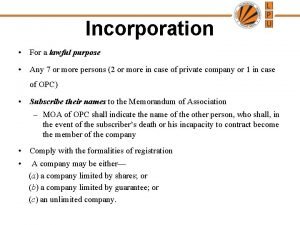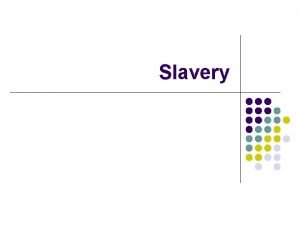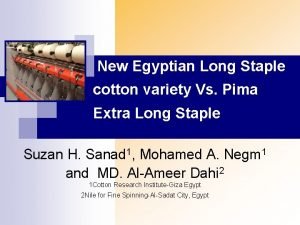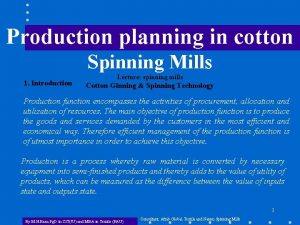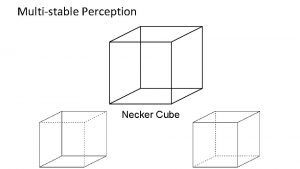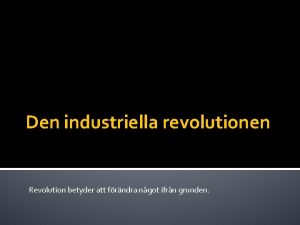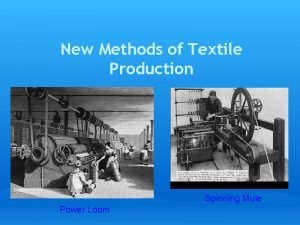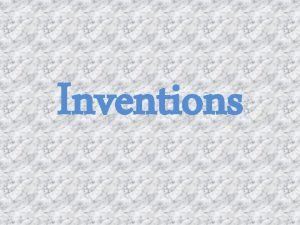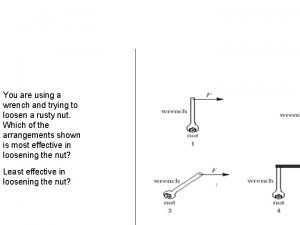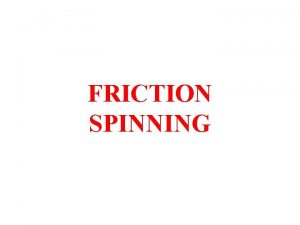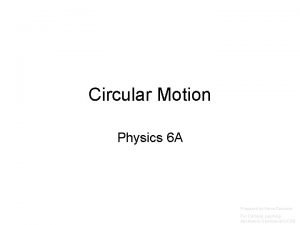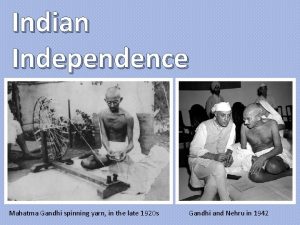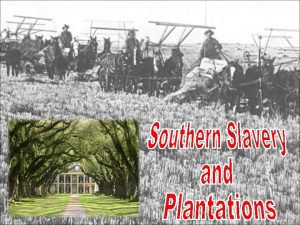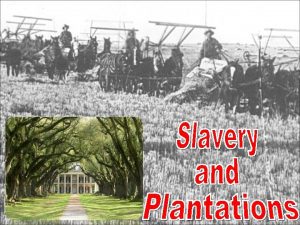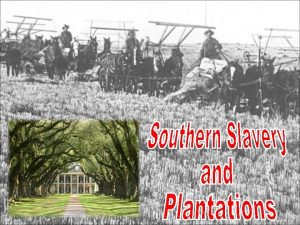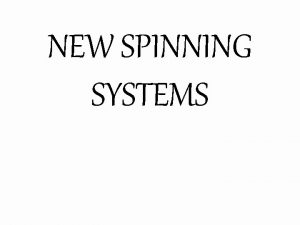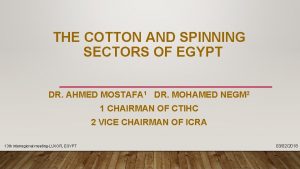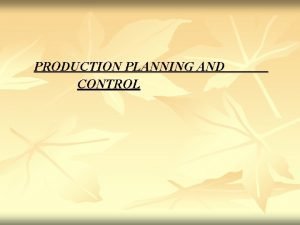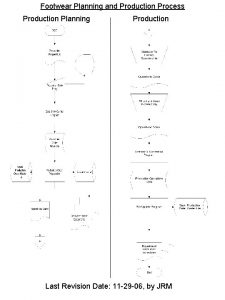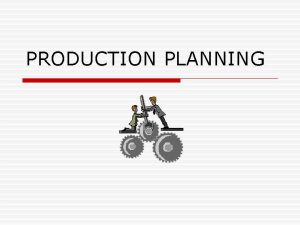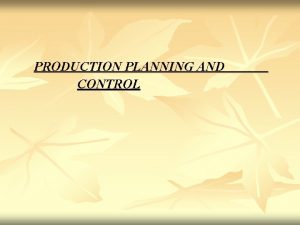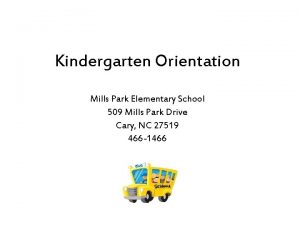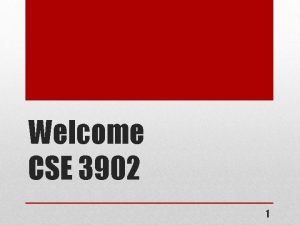Production planning in cotton Spinning Mills 1 Introduction





















- Slides: 21

Production planning in cotton Spinning Mills 1. Introduction Lecture: spinning mills Cotton Ginning & Spinning Technology Production function encompasses the activities of procurement, allocation and utilization of resources. The main objective of production function is to produce the goods and services demanded by the customers in the most efficient and economical way. Therefore efficient management of the production function is of utmost importance in order to achieve this objective. Production is a process whereby raw material is converted by necessary equipment into semi-finished products and thereby adds to the value of utility of products, which can be measured as the difference between the value of inputs state and outputs state. 1 By M. H. Rana Pg. D in CIT(JU) and MBA in Textile (PAU) Consultant: Aftab Global Textile and Nannu Spinning Mills

Spinning Process Flow Bale Mixing Carded Sliver Blow Room Combed Sliver By pass for Karded Yarn Drawing Roving bobbin Drawing Carding Lap Forming Combing Cops Cone Roving Ring Spinning Winding 2 By M. H. Rana Pg. D in CIT(JU) and MBA in Textile (PAU) Consultant: Aftab Global Textile and Nannu Spinning Mills

Blow Room L-1 Blendmat >LVSA > Axi-Flow > Multimixer >Asta >CVT-03>Loptex>Sp-Fp>Lvsa> Card 1 - 10 Blow Room L-2 Blendmat >SP-MF> Multimixer >Clc 3 >Loptex>Sp-Fp>Lvsa> Card 1 - 12 Draw Frame Breaker Draw Frame Finisher Breaker Draw >1 to 4 Finisher Draw> 5 to 8 Lap Former >1 to 1 Comber 1 to 4 Simplex Line -1 > 1 to 5 Simplex Line -2 > 5 to 10 Ring Frame Line -1 > 1 to 19 Line -2> 20 to 38 Finishing Line -1 > 1 to 10 3 By M. H. Rana Pg. D in CIT(JU) and MBA in Textile (PAU) Consultant: Aftab Global Textile and Nannu Spinning Mills

Picture: Diagram for Spinning Mills 4 By M. H. Rana Pg. D in CIT(JU) and MBA in Textile (PAU) Consultant: Aftab Global Textile and Nannu Spinning Mills

2. Types of production system Broadly three types of production systems which are mentioned here under: a. Continuous production b. Job or unit production c. Intermittent production a) Continuous production: - It refers to the production of standardized products with a standard set of process and operation sequence of demand. It is also known as mass flow production or assembly line production. This system ensures less work in process inventory and high product quality but involves large investment in machinery and equipment. The system is suitable in plants involving large volume and small variety of output e. g. oil refineries reform cement manufacturing etc. b) Job/Unit production: - It involves production as per customer's specification each batch or order consists of a small lot of identical products and is different from other batches. The system requires comparatively smaller investment in machines and equipment. It is flexible and can be adapted to changes in product design and order size without much inconvenience. This system is most suitable where heterogeneous products are produced against specific orders. E. g. yarn production: different count as per the 5 customer order. By M. H. Rana Pg. D in CIT(JU) and MBA in Textile (PAU) Consultant: Aftab Global Textile and Nannu Spinning Mills

) Intermittent Production: Under this system the goods are produced partly for inventory and partly for customer's orders. E. g. components are made for inventory but they are combined differently for different customers. Automobile plants, printing presses, electrical goods plant are examples of this type of manufacturing. c 3. Key of production plan? Manufacturing or service industry can not be productive without a sound production plan. Effective planning is fundamental in any business; it's a complex process that covers a wide variety of activities that ensure that materials, machinery and human resources management are available to complete the work. (M+M+M+M circle) 3. 1. Key factors of a production plan Effective planning on a sound understanding of key activities that entrepreneurs and business managers should apply to the planning process. Here are some examples: i. Forecast market expectations: To ensure the plan effectively need to estimate potential sales with some reliability. Most businesses don't have firm sales or service figures. However, they can forecast sales based on historical information, market trends and/or established orders. 6 By M. H. Rana Pg. D in CIT(JU) and MBA in Textile (PAU)

ii. Inventory control: Reliable inventory levels feeding the pipeline have to be established and a sound inventory system should be in place, (L/C qnty+Shipped qnty+port qnty+warehouse qnty+ prodline qnty. ). iii. Availability of equipment and human resources: All orders flow within your production line or service. Production planning helps you manage open time, ensuring it is well-utilized, while being careful not to create delays. Planning should maximize your operational capacity but not exceed it. It's also wise not to plan for full capacity and leave room for the unexpected priorities and changes that may arise for PDA (Plan Do Action) theory. iv. Standardized steps and time: Typically, the most efficient means to determine your production steps is to map processes in the order that they happen and then incorporate the average time it took to complete the work. Remember that all steps mayn't happen in sequence and that many may occur at the same time. After completing a process map, you will understand how long it will take to complete the entire process. Where work is repeated or similar, it is best to standardize the work and time involved. Document similar activities for future use and use them as a base-line to establish future routings and times. This will speed up your planning process significantly. During the process map stage, you may identify waste. You can use operational efficiency/lean manufacturing principles to eliminate waste, shorten the process and improve deliveries and 7 By M. H. Rana Pg. D in CIT(JU) and MBA in Textile (PAU)

costs. BDC Consulting can assist businesses in process mapping and other operational efficiency principles and tools. v. Risk factors: Evaluate these by collecting historical information on similar work experiences, detailing the actual time, materials and failures encountered. Where risks are significant, you should conduct a failure mode effect analysis method (FMEA) and ensure that controls are put in place to eliminate or minimize them. This method allows you to study and determine ways to reduce potential problems within your business operations. This type of analysis is more common in manufaturing and assembly businesses. 3. 2. How to plan work All other synchronies activities are initiated from the production plan and each are a dependent on the interaction of the activities. Typically a plan addresses materials, Machinery, human resources, Method and training capacity to complete the work in a standard time. In order to do a good sales forecast, you should base it on a history of firm orders. The production plan initially needs to address specific key elements well in advance of production in order to ensure an uninterrupted production flow. 8 By M. H. Rana Pg. D in CIT(JU) and MBA in Textile (PAU) Consultant: Aftab Global Textile and Nannu Spinning Mills

Material ordering Materials and services that require a long lead time or are at an extended shipping distance, also known as blank orders, should be ordered in advance of production requirements. Suppliers should send you materials periodically to ensure an uninterrupted pipeline like (L/C qnty+Shipped qnty+port qnty+warehouse qnty+ prodline qnty. ). Equipment procurement Procuring specialized tools and equipment to initiate the production process may require a longer lead time. Keep in mind that the equipment may have to be custom made or simply difficult to setup. This type of equipment may also require special training. Human resources acquisitions and training Key or specialized positions may demand extensive training on specialized equipment, technical processes or regulatory requirements. These employees should be interviewed thoroughly about their skills. When hiring them, allow sufficient time for training and be sure that they are competent in their work before the job begins. This will ensure that your process or service flows smoothly. The production plan provides a foundation to schedule the actual work and plan the details of day-to-day activities. As sales orders come in, to address them individually based on their priority. The importance of the sales order will determine the work flow and when it should be planned. After this, may evaluate whether or not you are ready for production or service. You will need to determine as below. 9 By M. H. Rana Pg. D in CIT(JU) and MBA in Textile (PAU) Consultant: Aftab Global Textile and Nannu Spinning Mills

# If the inventory is available at the point where work is to start? If not, then the work needs to be rescheduled when supplies become available. There is no point in scheduling work that you will not be able to complete # Are your resources available? Do you have the necessar y staff to complete the task? Are the machines being used? # Does the standard time fit within the open time allowed? If not, then the work should be rescheduled # You should be careful to minimize risk factors; allowing too many what ifs can delay delivery and be counter productive Communicate the plan After determine that to met the criteria to start production, you will need to communicate the plan to the employees who will implement it. You can plan the production on spreadsheets, databases or software which usually speeds the process up. However, a visual representation is preferred as a means to communicate operation schedules to floor employees. Some businesses post work orders on boards or use computer monitors to display the floor schedule. The schedule also needs to be available to employees ahead of time and kept up to date. 10 By M. H. Rana Pg. D in CIT(JU) and MBA in Textile (PAU) Consultant: Aftab Global Textile and Nannu Spinning Mills

Consider change Production planning and scheduling is follow up with changes to orders. Changes happen every day; you may lack materials; delivery time is moved up or work parameters have to be adapted. You will need to adjust your plan in line with these changes and advise the plant. Dealing with change is not always easy and may take as much effort as creating the original production plan. You will need to follow up with the various departments involved in order to rectify any problems. As well, computer software linear programming can be helpful in tracking changes, inventory, employees and equipment. 4. Production planning may be defined as the technique of forecasting every step in a long series of separate operations, each step to be taken at the right time and in the right place and each operation to be performed in maximum efficiency. It helps entrepreneur to work out the quantity of material manpower, machinery and money engagement for producing predetermined level of output in given period of time. There are two methods to prepare a spin plan for spinning mill. The first and the well known method is using a manual calculation back from the produced yarn (ring) up to blow room. The new method is to use special software that only needs some critical spinning values to be used as an input, and then it will calculate the whole required parameters. 11 By M. H. Rana Pg. D in CIT(JU) and MBA in Textile (PAU) Consultant: Aftab Global Textile and Nannu Spinning Mills

4. 1. Manual Preparation of Spin plan for cotton mills Parameter B/R Carding D/R Lap winder Hank/Count Combing Simoplex Ring Frame 0. 0016 0. 0098 0. 16 (52 gr/yd) 3. 5 52 Doubling 0 0 8 32 0 0 0 Draft 0 100 8 1. 96 16. 32 21. 87 17. 14 Delivery Speed 12 45 450 m/min 90 m/min 0 1200 rpm 17500 rpm Deliv roller dia 9. 5” 27” TM 4. 35 4. 45 TPI 1. 87 33. 30 Efficiency 85 90 90 85 90 Idle time % 12 10 10 7 7 7 5 Waste% 4 3. 5 0. 5 15 0. 25 2. 0 Deliv. Per frame 2 1 8 1200 Sample spin Plan for Ne 60 /1 count No of Spindles= 42000 Average Count = 60/1 Ne By M. H. Rana Pg. D in CIT(JU) and MBA in Textile (PAU) 12 Consultant: Aftab Global Textile and Nannu Spinning Mills

Ring frame: Total no. of spindles = 42528 Spindle speed = 17500 rpm Spindle per frame = 1200 & 1008 Yarn count = 52 S TPI = 33. 30 Efficiency = 90% Waste = 2. 5% Average stoppage = 5% Required ring frame = 22*1200+16*1008=26400+16128=42528 spindles. No. of running spindles = 42528 Production per hour = Avg speed*no. of spindles *eff% 24*21*count*tpi*24 =17500*0. 90*42528 24* 21*52*32. 30 = 791. 25 lbs/hr =18990. 23 lbs/day 13 By M. H. Rana Pg. D in CIT(JU) and MBA in Textile (PAU) Consultant: Aftab Global Textile and Nannu Spinning Mills

Simplex frame: Total no. of spindles = 1200 Spindle speed = 1200 rpm Spindle per frame = 120 Roving hank= 1. 45 TPI = 1. 50 Efficiency = 85% Average stoppage = 5% and waste % 2% Production per hour per spindle = Avg speed*no. of spindles *eff% *60 Roving hank*tpi*36*840 =1100*0. 85*1*60 = 0. 70 lbs/hr/spn 1. 60*1. 65*36*840 Production Simplex= Production of Ring x (100+Ring waste)/100 =791. 25 *(100+2)/100 =791. 25*1. 02 =807. . 075 lbs No. Of Running Spindles = 807. 07/0. 702 =1148. 51 spindles No of required spindles = 1148. 51 *(100+stoppage time)/100 =1148. 51*1. 05 =1205. 94 spindles So no. of simplex frame required =1205. 94 /120 =10. 05 14 By M. H. Rana Pg. D in CIT(JU) and MBA in Textile (PAU) Consultant: Aftab Global Textile and Nannu Spinning Mills

Combing Feed/Nip = 7 mm Nips/ min= 250 Feed lap weight = 850 grains/yds Feed Lap hank = 0. 01 Delivery sliver weight =52 grains/yds Delivery sliver hank = 0. 16 Noil = 18% No. of head/frame = 7 Efficiency = 90%. Average stoppage time= 7% Production of combing = Production of simplex *(100+Simplex waste%)/100 = 807. 07*1. 0025 = 809. 0827 lbs Production per hour = {feed/nip(mm)/100} * (nips/min)*60* lapwt. In grain*no. of head* eff% =7*250*1. 09*60*850*7*90/1000/7000/100 = 87. 55 lbs No of Comber =809. 0827/87. 55= 9. 244 Installed no of comber =9. 244*(100+7)/100 =9. 88 =10 set as 4 % of total production will be combed so required comber = 4 15 By M. H. Rana Pg. D in CIT(JU) and MBA in Textile (PAU) Consultant: Aftab Global Textile and Nannu Spinning Mills

Delivery speed = 100 m/min Lap hank in grain/yds =750 Lap hank =0. 0098 Efficiency =85% Waste = 2. 0% Stoppage time = 5% Production of lap former = production of comber ×(100+waste)/100 =809. 0827× 1. 15=930. 45 lbs Production per hour = deli speed*lap hank (grain/yd)*60*Eff% / 7000 = 100*1. 09*60*750*85/7000/100 =595. 6071 lbs Number of Lap former = 930. 45/595. 6071 =1. 57 No. of installed lap winder =1. 57 *(100+stoppage time)/100 =1. 57*1. 05 =1. 65 that it required 40% So Lap winder required 1. 65*40/100=0. 66 = 1 16 By M. H. Rana Pg. D in CIT(JU) and MBA in Textile (PAU) Consultant: Aftab Global Textile and Nannu Spinning Mills

Draw frame Delivery roller speed = 450 m/min Sliver hank = 0. 14 Delivery head per frame = 2 Efficiency = 90% Waste = 2% Stoppage time = 6% Production of draw frame = Super lap former production *(100+waste)/100 = 595. 6071 *1. 02 =607. 51 lbs Production /hour/frame = deli speed*60*eff%*No. of head/840/sliver hank =450*60*85*2/840/. 14/100 = 390. 3061 lbs Running Draw frame = 607. 51/390. 3061 =1. 55 Install draw frame = 1. 55 ×(100+stoppage time)/100 =1. 55*1. 06=1. 65 = 2 17 By M. H. Rana Pg. D in CIT(JU) and MBA in Textile (PAU) Consultant: Aftab Global Textile and Nannu Spinning Mills

Carding section: Doffer diameter = 27 inch Doffer speed = 40 rpm Sliver hank = 0. 12 Efficiency = 90% Wastage = 4% Average ideal time = 10% Carding production = Draw frame production ×(100+Waste)/100 = 6071*(100+0. 5)/100=607. 6071*1. 005= 610. 65 lbs Production/hour/machine =pie *doff dia*doof speed*60*eff%/36/840/sliver hank =3. 14*27*52*60*90/36/840/. 12/100 = 65. 65 lbs Running Carding m/cs= 610. 65/65. 65 =9. 31 Installed Carding Machines =Running Carding machines *(100+avg stoppage time)/100 =9. 31*1. 10=10. 23 = 10 set 18 By M. H. Rana Pg. D in CIT(JU) and MBA in Textile (PAU) Consultant: Aftab Global Textile and Nannu Spinning Mills

Blow Room Section Calendar roller Diameter (C. R. D) = 9. 5 inch Calendar roller speed (C. R. S) = 12 rpm Lap hank = 0. 0016 Waste = 4% Efficiency = 85% Scutcher / blow room line = 2 Average ideal time = 12% Blow Room production = Carding production×(100+carding waste)/100 610. 65*(1. 04)=635. 07 lbs Pro. /hr. /Scutcher of Blow room = pie*C. R. D*C. R. S*60*Eff% / 36/840/. 0016 = 3. 14*9. 5*12*60*85/36/840/. 0016/100= 377. 314 lbs Running Scutcher = blow room prod/hr/scutacher of blowroom = 635. 07/377. 31 =1. 68 Installed scutcher = 1. 68 *(100+avg ideal time)/100 =1. 68*1. 12=1. 88 =2 No. of Blow room line = 2/2 = 1 19 By M. H. Rana Pg. D in CIT(JU) and MBA in Textile (PAU) Consultant: Aftab Global Textile and Nannu Spinning Mills

Autoconer section: No of Drum per autoconer =60 Speed per drum =1350 m/min Yarn Count=52 Ne waste = 1% Efficiency = 75% Average ideal time = 5% Winding production = ring prod×(100 -ring waste)/100 791. 25*0. 98= 775. 425 lbs Pro. /hr. /drum =drum speed*eff%* time/840/count =1350*75*60/840/52/100 =1. 49 lbs Running drum =775. 425/1. 39 =557. 54 Running aotoconer machine = 557. 54/60 =9. 29 Installed autoconer = 9. 29*(100+avg ideal time)/100 =9. 29*1. 05=9. 75 No. of autoconer = 10 20 By M. H. Rana Pg. D in CIT(JU) and MBA in Textile (PAU) Consultant: Aftab Global Textile and Nannu Spinning Mills

Summary: Number of required machines for 42528 spindles & 52 S Count Cotton yarn: " Blow room line = 1 (2 Scutcher) " Carding machines = 10 " Draw frame = 02+02 " Super lap former =01 " Comber = 04 " Simplex = 10 " Ring frame = 22(1200)+16(1008)=38 “ Autoconer = 10 21 By M. H. Rana Pg. D in CIT(JU) and MBA in Textile (PAU) Consultant: Aftab Global Textile and Nannu Spinning Mills
 Jubilee cotton mills vs lewis
Jubilee cotton mills vs lewis Cotton on the roadside cotton in the ditch
Cotton on the roadside cotton in the ditch Egyptian vs pima cotton
Egyptian vs pima cotton Pre-production, production, post-production
Pre-production, production, post-production Belle mixer
Belle mixer Spinning dancer illusion
Spinning dancer illusion Glass spinning top
Glass spinning top A pole vaulter first converts kinetic energy into
A pole vaulter first converts kinetic energy into Spinning jenny konsekvenser
Spinning jenny konsekvenser Examples of axial movements
Examples of axial movements Spinning mule
Spinning mule Objectionable faults in yarn
Objectionable faults in yarn Spinning mule impact
Spinning mule impact Bartolomeo cristofori first piano
Bartolomeo cristofori first piano Wrench
Wrench Leukocyte esterase
Leukocyte esterase Friction spinning process
Friction spinning process Philadelphia textile
Philadelphia textile The spinning wheel of doom
The spinning wheel of doom Melt spinning
Melt spinning Gandhi spinning yarn
Gandhi spinning yarn Spinning jenny
Spinning jenny
